Democrats in Congress were thrilled when President Joe Biden signed a landmark climate and health care bill into law last week. But the moment felt bittersweet for some ― among them, Rep. Debbie Dingell (D-Mich.).
Dingell has been leading calls for a massive new investment in home and community-based services, or HCBS, which is the set of programs and supports that help the elderly and people with disabilities to live independently. The campaign has been personal for Dingell, who speaks frequently of the struggles she faced trying to find and coordinate care for her ailing husband, former Rep. John Dingell (D-Mich.), in his final years.
Eighteen months ago, it looked like that campaign was on the cusp of success when a major HCBS proposal was part of Biden’s “Build Back Better” blueprint for coming legislation. And it wasn’t just HCBS getting a White House push. Similarly sweeping proposals for child care and paid leave were also in the plan. Together, they formed a caregiving agenda, with a goal to create for the U.S. something that already exists in most economically advanced countries: a cradle-to-grave guarantee that people will have assistance and care at the most vulnerable periods of their lives.
But with wafer-thin majorities and no realistic prospect of Republican support, Democratic leaders were at the mercy of more conservative members who wanted a smaller, less ambitious bill. The caregiving items were competing for resources alongside other initiatives and the pool of resources kept shrinking with each round of negotiations ― until finally Sen. Joe Manchin (D-W.Va.) made clear he would withhold his make-or-break 50th “yea” vote until Democrats dropped everything but the climate and health provisions.
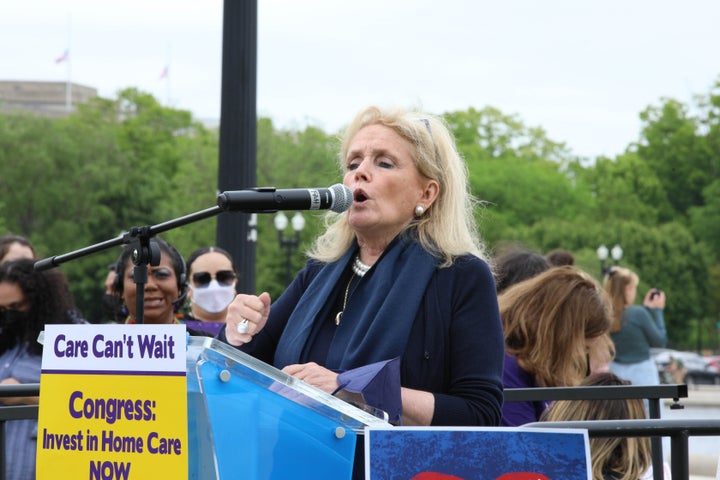
Dingell did her part to make sure the bill passed, celebrating the accomplishment with her colleagues. But she couldn’t stop thinking about the missing caregiving pieces, including the HCBS initiative, especially in the last few weeks when the issue once again became personal: She was simultaneously trying to arrange ongoing care for her 88-year-old mother, who was about to leave the hospital following a cardiac emergency, and once again struggling to identify and hire caregivers.
“This system is so broken,” an exasperated Dingell told HuffPost in a phone interview, ticking off problems she’d had finding caregivers. “Just think about what this is like for somebody who doesn’t already know how to be an advocate, how to get things organized, think about how much it costs and all the people who can’t afford it.”
Dingell said the experience has only reinforced her determination to get something done. “We didn’t get it done, but I just look at that as an opportunity to begin again,” she said.
And she has plenty of company. In a series of interviews over the past two weeks, lawmakers, aides and advocates who worked on the caregiving agenda said they were in the same mindset, convinced that with more effort they could succeed.
And they really might. Especially in recent history, success at major progressive reforms has followed high-profile, significant failures, whether it was the Affordable Care Act rising from the rubble of the Clinton health care plan or the new clean energy investments that Biden just signed emerging in the wake of the failed attempt to enact a “cap and trade” emissions program a decade ago.
But that success didn’t happen by accident. It happened, at least in part, because Democrats went through some serious introspection ― taking stock of what went wrong and why, and how to avoid those problems in the future.
The caregiving agenda supporters HuffPost interviewed all seemed to recognize this. They said those conversations are already taking place and that they already have some pretty good ideas about where the last effort came up short. But identifying problems is one thing. Solving them is quite another — especially when the political obstacles to progressive change of any kind remain so formidable.
A Crisis That Felt Like An Opportunity
That’s one reason the missed opportunity hurts so much: The political conditions of these past two years felt more favorable to enacting a caregiving agenda than ever before.
The pandemic made clear how much families rely on paid care providers. It also illuminated underlying problems like the chronically low pay of care workers and the inability of providers to raise fees, which would allow them to boost pay, because the current prices max out so many families.
One result has been widespread, well-publicized shortages of child care.
“At least 16,000 programs have closed down permanently, while those that remain open are under immense strain from short-staffing pressures,” Elliot Haspel, senior program officer for early childhood education at the Robins Foundation, told HuffPost. “Parents are hitting a wall of waitlists while those who can finagle a spot are paying even more exorbitant fees than before. It’s not a complicated story: a fragile sector shattered.”
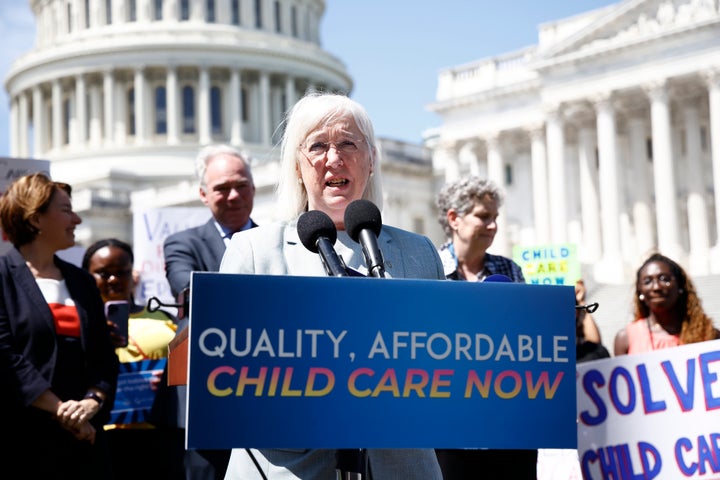
The same basic dynamic of underpaid employees and employers who can’t (or won’t) pay them more is creating the shortage of home care workers that Dingell has seen firsthand and that has been generating headlines all across the country — in some cases, forcing seniors and people with disabilities to leave home and go back to institutional care settings.
The pandemic has also thrown a spotlight onto the need for guaranteed paid leave, mainly by demonstrating what happens when workers don’t have it. They go to work sick, infecting others, or lose their wages and sometimes their jobs.
Progress On Organizing, But Not Enough
Advocates had something else going for them in the recent reform push. They were ready for the moment.
They’d been preparing for years, putting together plans and legislation. They also committed to working together, which was no small thing given past rivalries and tension over competition for limited resources. “We had an agreement that we would lift all of these issues together, that we would not be pitted against each other,” Ai-jen Poo, president of the National Domestic Workers Alliance, told HuffPost.
The unified front made them stronger and helped get buy-in from Democratic politicians, including the 2020 presidential candidates, all of whom included major caregiving proposals in their platforms. They also won support from the business community, mainly by demonstrating how care for children and elders, along with paid leave, helped to stabilize the workforce.
“We didn’t get it done, but I just look at that as an opportunity to begin again.”
- Rep. Debbie Dingell (D-Mich.)
But even as the corporate community was cheering on the caregiving initiatives, it was fighting the tax increases to finance the new programs. “I think that had a huge influence,” said Vicki Shabo, a longtime paid leave advocate who is now a senior fellow at New America, a Washington-based think tank.
And while the caregiving movement is a lot more organized than it was even a few years ago, it doesn’t have the kind of advocacy or lobbying strength to overcome that kind of resistance — or even to ensure its priorities are something Democrats must address.
“It’s clear that the sector still needs to build its power,” said Haspel, who is also author of “Crawling Behind: America’s Childcare Crisis and How to Fix It.” “Parents of young children are not feared as a constituency, and we simply don’t have the money or political clout to throw around in the way that health care or climate or hedge fund managers do — the lobbying numbers are pretty meager.”
A Message That Not Enough People Have Gotten
The common rationale for federal action on child care, HCBS and paid leave is that society should take some collective responsibility for caregiving, through public programs, rather than letting it all fall on individual families. But that can be a difficult message to get across, when so many Americans are unaccustomed to their government playing that role.
“There is still a misimpression [in the U.S.] that these programs and supports are not core to what the government should do,” Shabo said.
One way to change that impression is to publicize the instances where it is happening in the U.S. — which, for paid leave, means talking about states like California, Colorado and Maryland that have programs in place or are in the process of implementing them and documenting the results.
Another is to try flipping the script on government action, which critics frequently portray as infringements on individual liberty.
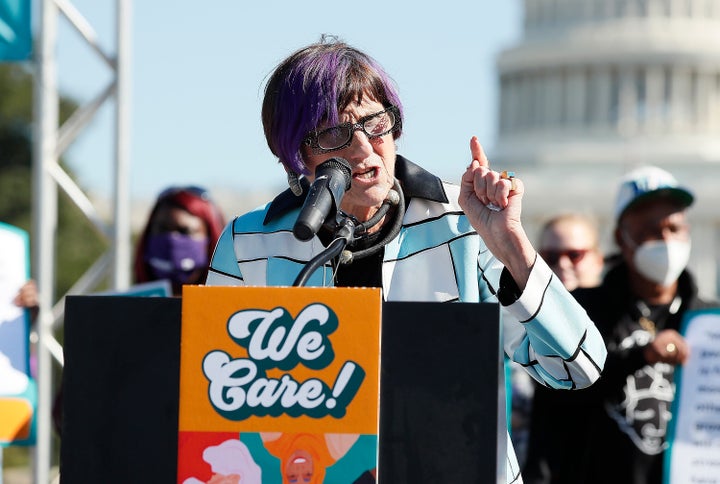
“These programs create freedom,” Poo said. “They’re enabling people’s participation in the economy, freedom to help people with disabilities live independently and full, actual lives, whole lives. They free us from the guilt and the shame that comes with feeling like a failure when you can’t afford or manage the care.”
Advocates may also need to do a better job of simply conveying how far-reaching the impacts of caregiving are — partly to justify ambitious national action and partly to make sure people struggling in the current system realize it’s not their fault.
“There is still a misimpression [in the U.S.] that these programs and supports are not core to what the government should do.”
- Vicki Shabo, New America
“This is not a niche issue,” Poo said. “Fifty-three million family caregivers, and how many working parents who need child care? And then the number of boomers and older adults who are going to need these services in the next 10 to 15 years. ... The actual human cost and human impact of not moving on these issues and making progress, I don’t think it’s well enough understood.”
“I feel like we were starting to chip away at this … but it is a deep, profound challenge,” Poo said.
A Chance To Rethink Policy Too
For the caregiving agenda to become reality, its supporters may have to do more than rethink politics. They may need to rethink policy too, by subjecting their ideas to more outside scrutiny and contemplating major changes.
One big question is the role of states. Both the child care and HCBS proposals put up a lot of federal money but depended on states taking the money and using it. The hope was that even conservative state officials would not turn down a chance to help so many constituents. This is more or less what’s been happening during the pandemic, advocates noted: States have been accepting federal relief dollars to prop up child care without much political fuss.
But the child care and HCBS proposals that were part of Build Back Better made the funds conditional on states making long-term changes to their programs, and committing to a small-but-ongoing contribution of state funding — which, as critics like Matt Bruenig of the People’s Policy Project pointed out, sounds a lot more like the Affordable Care Act’s Medicaid expansion that to this day a dozen Republican-led states have rejected.
“I feel like we were starting to chip away at this… but it is a deep, profound challenge.”
- Ai-jen Poo, National Domestic Workers Alliance
Figuring out a way to avoid this problem, while still allowing for state flexibility where it makes sense as policy, is something advocates say they are already contemplating. “Whatever we come up with for HCBS going forward, we want to make sure that every state, red or blue, gets the money,” said Nicole Jorwic, chief of advocacy and campaigns at Caring Across Generations.
A bigger question is whether to engage in some kind of more wholesale rethinking of the existing caregiving proposals, like whether programs should devote some money to subsidizing people who stay home and provide care directly for loved ones. This has been the one criticism conservatives and Republicans frequently make about Democratic child care plans — that they don’t do enough for stay-at-home parents.
Compromise And An Open Mind
Rethinking proposals is never easy; the difficult trade-offs of policy and politics inevitably lead to less-than-ideal solutions. But the lawmakers and activists who spoke to HuffPost all said they were willing to be flexible and compromise — and pointed to concessions they made this past year, as they tried to save elements of their agenda, as proof.
“I think sometimes there was sort of this idea that, you know, advocates were not willing to negotiate,” Dawn Huckelbridge, director of Paid Leave for All, told HuffPost. “And I think in each of our cases, that was absolutely not true.”
She noted that original proposals for paid leave envisioned 12 weeks and that, by the end, supporters in and outside Congress were willing to make do with as little as four — figuring that, once the plan was in place, they would have opportunities to expand it.
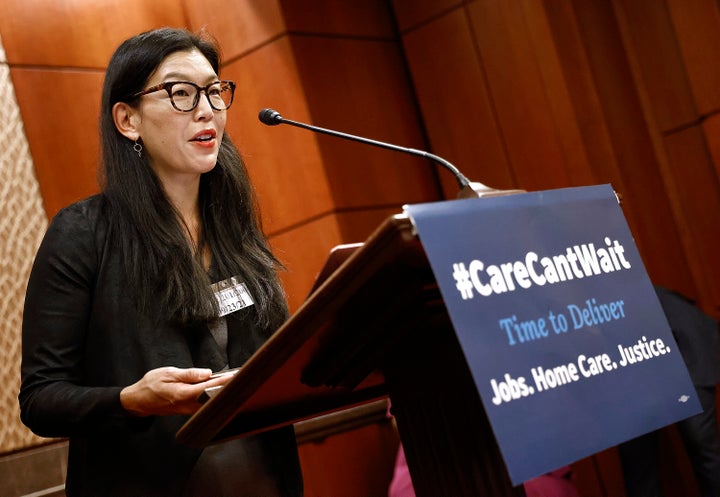
“What we often said was, for the majority of people in this country who have zero days of paid leave, this is transformative stuff,” Huckelbridge said. “So of course we’re not going to turn that down.”
The lawmakers and advocates who have been working on the caregiving agenda also said they were open-minded about working with Republicans, whether it’s on short-term fixes or longer-term plans. As evidence of potential Republican interest, several noted that two GOP senators (Richard Burr of North Carolina and Tim Scott of South Carolina) recently introduced a child care bill, while their Republican colleague from Florida, Marco Rubio, has long promoted his own version of paid leave.
But a common theme in those GOP proposals is a lack of new funding. Under Rubio’s proposal, for example, workers effectively pay for their own leave by giving up some of their future Social Security retirement benefits. “Absent real dollars, you’re just squeezing a balloon, where either the workers or the families or both are sacrificing,” said Melissa Boteach, vice president for income security and early learning/child care at the National Women’s Law Center.
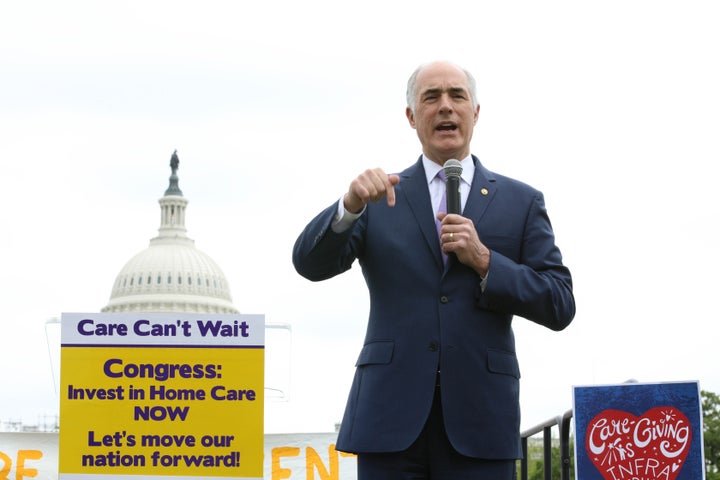
Not that Democrats are always so helpful. Pledges never to raise taxes on the middle class can preclude social insurance schemes that rely on small payroll contributions, which is how Social Security and Medicare work — and how paid leave programs in the states work.
“I think the president’s tax pledge created huge problems for us,” Shabo said.
What’s Next, And What’s After That
All of that sounds like a lot of work ahead for the caregiving agenda’s champions — and it probably is. But they’ve also made a lot of progress already, coming within a few votes on Capitol Hill of enacting big pieces of their agenda.
As recently as a few years ago, that would not have seemed possible.
“Because of the countless families who shared their stories, Congress is finally paying attention to the caregiving crisis,” said Sen. Bob Casey (D-Pa.), another leader in the crusade for a new, more comprehensive HCBS program. “For the first time, Democrats all agree we need to invest in home care for seniors and people with disabilities and the workers who care for them.”
Sen. Patty Murray (D-Wash.), who has spearheaded the child care campaign for years, has also seen the difference. When she first got to the Senate in 1993, she said, nobody on Capitol Hill wanted to discuss child care — even though she knew, as a working parent and former preschool teacher, how many families were already struggling.
“It was a silent epidemic,” Murray told HuffPost.
Now child care gets far more attention, Murray said. “We’ve broadened the conversation, created a real movement, developed a knowledge base. That gives you such a head start in politics.” At the same time, Murray added, whether that head start amounts to anything depends on picking up where this year’s legislative effort left off. “We can’t just vote on the last bill and call it a day,” she said.
Of course, the caregiving agenda’s future will depend on one other, critical factor: whether a majority of lawmakers support and are willing to fight for it. The reality is that some version of the original caregiving proposals in Build Back Better might be law today if the House and Senate had even a handful of extra members who were committed to them.
Rethinking policy, building coalitions, improving communications — all of that matters a lot. But ultimately success still depends on winning enough elections.

